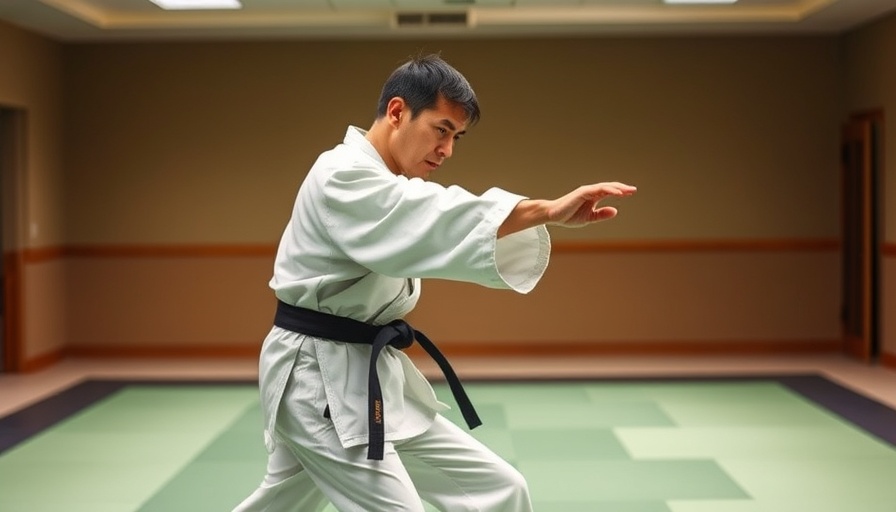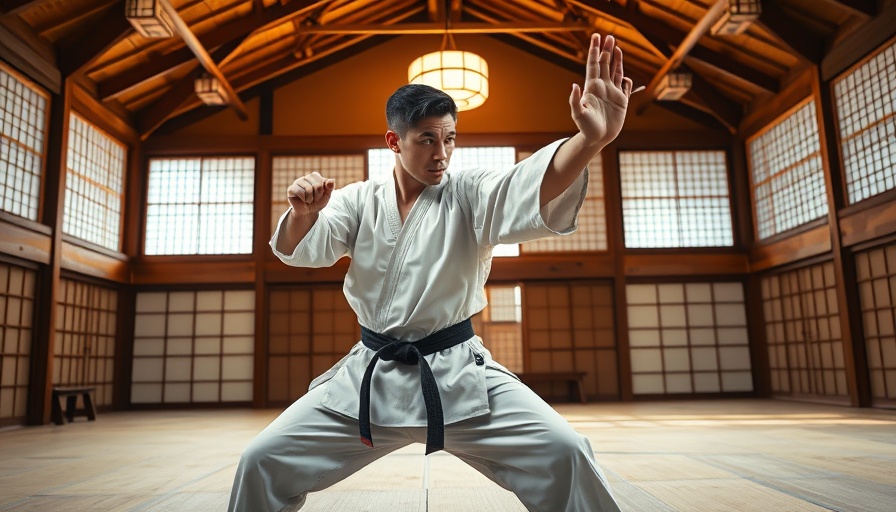
Understanding Kokutsu-Dachi and Fudo-Dachi in Shotokan-Ryu
For many martial arts practitioners, understanding the stances in their practice isn't just about formality; it's about effectiveness and adaptability. In Shotokan-Ryu, two stances stand out for their unique applications—Kokutsu-dachi and Fudo-dachi. These positions not only embody the essence of our style but also present universal principles applicable in various forms of Budo and martial arts.
The Importance of Active Tachikata
One crucial concept when executing these stances is the principle of 'Active Tachikata.' This term implies that merely adopting a stance is insufficient; it must be an active posture that allows for agility, speed, and an effective transfer of weight. Practicing mindful stances transforms Kokutsu-dachi and Fudo-dachi from simple positions into dynamic tools of both attack and defense, crucial for any serious karateka.
The Role of Balance and Intentional Off-Balancing
While balance is essential, exploring how to intentionally off-balance can enhance one's practice. This counterbalance technique embraces gravity's role in our movements—enabling faster reactions and invulnerability in transitions. As we become familiar with manipulating angles in our stance, we can maximize our defenses while ensuring optimal positioning for counterattacks.
Broader Insights: Tachikata from Other Ryuha
As Shotokan practitioners, understanding stances from various Ryuha, like Shiko-dachi from Goju or Mahanmi-nekoashi-dachi from Wado, can deepen our toolkit. By comparing these stances, students can glean insights that not only enhance their Karate understanding but also foster a broader appreciation for martial arts as a whole. Every style shines light on different philosophies of movement, adapting them enriches one’s practice.
Adapting Stances with Age and Injury
Importantly, as we age or experience physical challenges, we might naturally revert to higher stances. This adjustment doesn't negate the principles learned in the foundational stances but rather highlights the adaptability inherent in karate. We must remember, the essence of Kokutsu-dachi and Fudo-dachi—that of maintaining fighting readiness—remains applicable regardless of the stance's height.
Mindfulness through Karate: A Holistic Approach
Karate doesn't merely promote physical health; it encourages holistic well-being, combining mental resilience with rigorous physical training. Practicing Kokutsu-dachi and Fudo-dachi can serve as a meditative process, sharpening focus and stress relief, providing invaluable tools for personal growth. By weaving mindfulness into our training, karate can become a practice that nurtures both body and spirit.
The Sensei’s Guidance: Train with Excellence
The mastery of these stances requires dedication and expert guidance. At Gruber's Karate, Gurnee’s premier traditional karate dojo, practitioners can learn these techniques in a supportive environment, ensuring quality training for both kids and adults. From Shotokan classes focusing on advanced karate techniques to holistic martial arts training, there’s something for everyone.
As you continue or begin your karate journey, remember that each stance you practice tells a story. The stances of Kokutsu-dachi and Fudo-dachi aren't just forms; they embody principles that can lead to profound personal growth, discipline, and resilience in the face of life’s challenges. Embrace your training with purpose, understanding, and passion!
Train With The Best At Gruber’s Karate, Gurnee’s 5-Star Dojo For Kids, Teens & Adults! Connect with us at Sensei@gruberskarate.com or call (224) 347-6655. Visit us at Gruber's Karate, 5725 Stearns School Rd, Gurnee, IL 60031 for your next karate step!
 Add Row
Add Row  Add
Add 








Write A Comment